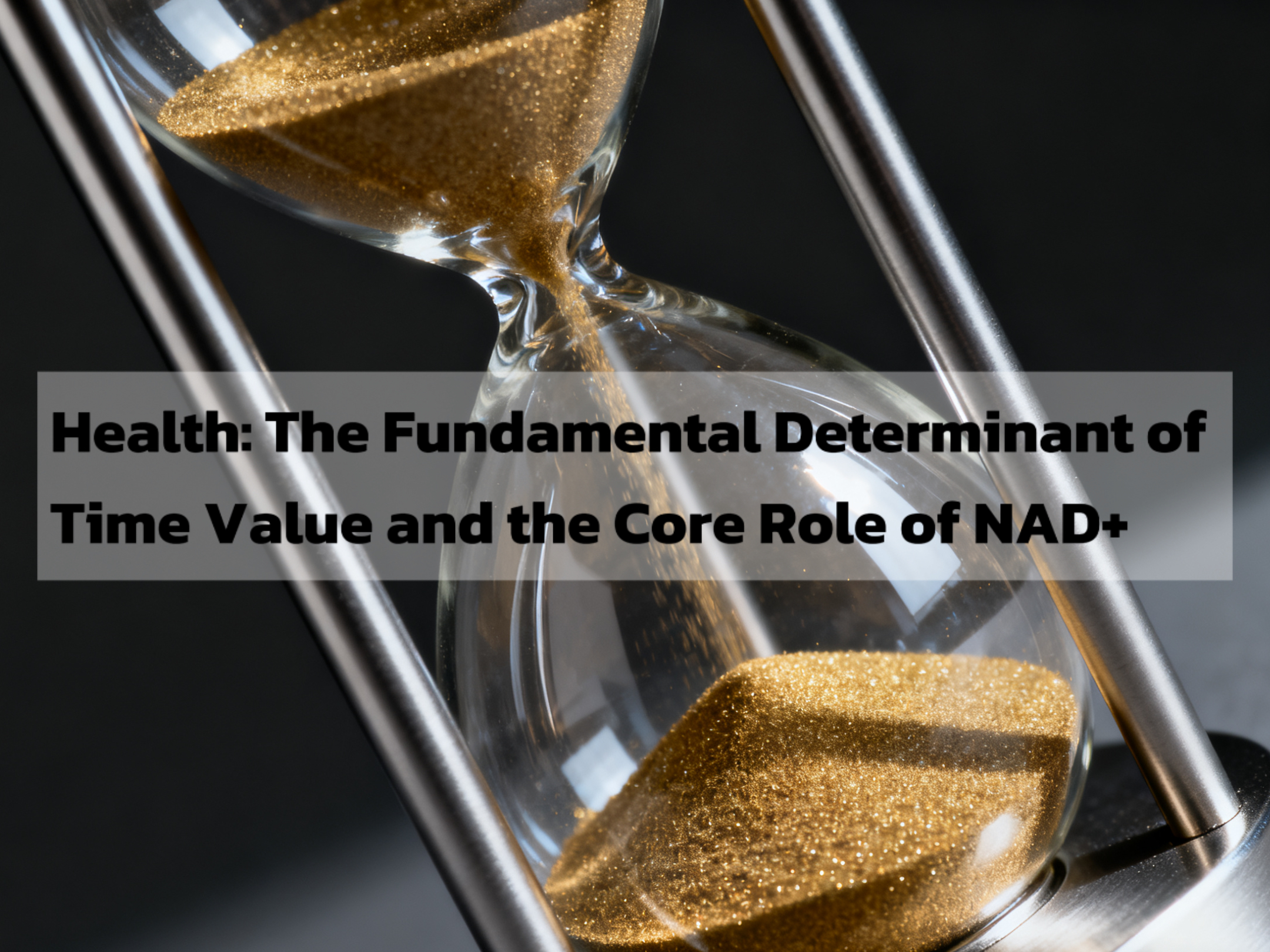Views: 1000 Author: Site Editor Publish Time: 2025-10-24 Origin: Site









Time as a Scarce Resource Reinterpreted
The conventional perception of time as an equitably distributed resource—24 hours per day for all individuals—has long been challenged by economic theory. As early as 1965, Gary Becker, a Nobel laureate in Economics, put forward the "Theory of the Allocation of Time," arguing that time is inherently a scarce resource requiring trade-offs among competing uses, with heterogeneous returns associated with different allocation strategies . Over half a century later, this framework has evolved to incorporate a critical dimension: health as the foundational condition for converting time into economic and social value. Without robust health, time loses its "capital attribute"—it cannot be effectively translated into productive output, regardless of its duration. This study aims to explore the role of health as a core variable in time economics, with a specific focus on nicotinamide adenine dinucleotide (NAD+) as a molecular mediator of health-related time value.
Becker's original theory centered on optimizing time allocation within households and individual decision-making , but contemporary research extends this framework by emphasizing health as a determinant of time's marginal productivity. Time is not a homogeneous resource; its utility is directly constrained by physiological capacity. This constraint is exacerbated by widespread "health depreciation" across global populations.
McKinsey's 2022 Health Report quantifies this impact: global productivity losses attributable to health crises exceed $15 trillion annually, accounting for 17% of the world's economic output. In China, epidemiological data from the Report on the Nutrition and Chronic Disease Status of Chinese Residents (2020) (released by the State Council Information Office) further illustrates this trend: the prevalence of hypertension among adults reaches 27.5%, hyperlipidemia exceeds 40%, and diabetes approaches 12%. These figures reflect the depreciation of "time currency"—even with identical time endowments, reduced physical function directly lowers the return on time invested in productive activities.
The relationship between health and time value exhibits parallels to the "compound interest effect" in wealth accumulation. Early-life investments in health yield dual dividends: immediate enhancements in cognitive focus and creative capacity, and long-term extension of the high-quality wealth-creation cycle. Conversely, neglect of health accelerates the depreciation of "temporal assets"—accumulated wealth and opportunities become vulnerable to sudden dissipation due to physiological collapse.
For mid-career professionals and elites, this dynamic is particularly salient. While stable income and substantial assets may characterize their economic status, unaddressed health deficits render such wealth accumulation precarious, analogous to a skyscraper without a foundation. In commercial societies, health thus emerges as an underlying variable: prolonging healthy lifespan directly extends the compound interest cycle of wealth.

The recognition of health's role in time economics has driven significant capital inflows into anti-aging research. In 2021, Altos Labs, a U.S.-based longevity technology firm, secured $3 billion in funding (including investment from Amazon founder Jeff Bezos) with cellular anti-aging as its core research agenda. Similarly, OpenAI CEO Sam Altman has invested in multiple cellular anti-aging startups, stating that "extending the duration of efficient work is more valuable than any financial investment." Additional laboratories, including Calico and Retro Biosciences, have received hundreds of millions of dollars from investors such as Bezos and Yuri Milner, with valuations reaching billions of dollars.
This capital concentration reflects a rational investment in "extending high-quality, efficient work and life states." Within cellular anti-aging research, the scientific community has converged on NAD+ (nicotinamide adenine dinucleotide) as a pivotal molecular target. NAD+ functions as a critical coenzyme in cellular metabolism and repair, mediating energy production (ATP synthesis), DNA repair, and antioxidant defense—earning it the moniker "fuel for cellular youthfulness". Its role is further underscored by its involvement in mitochondrial function regulation and sirtuin activation, pathways linked to aging and longevity.
Extensive empirical research confirms that NAD+ levels undergo significant age-associated decline. A 2017 study by David Sinclair and colleagues (published in Cell Metabolism) demonstrated that human NAD+ levels begin to decrease at age 30, with an average 50% reduction every 20 years. Earlier work by Verdin (2016, Science) reported that NAD+ concentrations in key organs—including the heart, liver, and skeletal muscle—are 40%–60% lower in middle-aged individuals compared to younger counterparts. This decline directly impairs energy metabolism efficiency and diminishes cellular repair capacity .
The physiological manifestations of reduced NAD+ parallel the depreciation of fixed corporate assets: without sustained maintenance, functional integrity deteriorates. Clinically relevant outcomes include daytime cognitive inattention, impaired nocturnal recovery, reduced exercise tolerance, and global immune dysfunction—all of which erode the productive value of time.
NAD+ has thus become a focal point of interdisciplinary research, with leading laboratories (Harvard University, Stanford University, Tsinghua University) investigating interventions to elevate NAD+ levels. Strategies under exploration include nutritional supplementation with NAD+ precursors (e.g., nicotinamide riboside [NR], nicotinamide mononucleotide [NMN]) and metabolic interventions . These approaches aim to slow the decline in healthy lifespan by targeting the molecular underpinnings of age-related physiological deterioration.
Notably, NAD+ modulation has transitioned from "futuristic technology exclusive to elites" to a component of health management strategies for high-net-worth individuals and professionals. This shift reflects growing recognition of NAD+ as a tangible mediator of health, rather than a speculative wellness concept.
This analysis reaffirms that health is the core determinant of time's economic value, extending Becker's time allocation theory to incorporate physiological constraints. NAD+ emerges as a critical molecular variable in this framework: its age-related decline drives health depreciation, while its modulation offers a pathway to preserve temporal asset value. As such, NAD+ transcends its role as a biological coenzyme to become a nexus between health maintenance, time productivity, and wealth compounding. Future research should prioritize the translation of NAD+ targeted interventions into scalable health strategies, thereby enhancing the productive value of time across populations.
Important Reminder:All content in this article is for general reference only and is provided solely to offer information support for practitioners in the nutrition and health industry. Descriptions related to efficacy are supported by corresponding data, but they do not represent claims or guidance for consumers. Content related to health, medical care, and technological applications is for reference only. For medical matters, please consult professional medical institutions and follow medical advice. This article does not provide any medical recommendations.